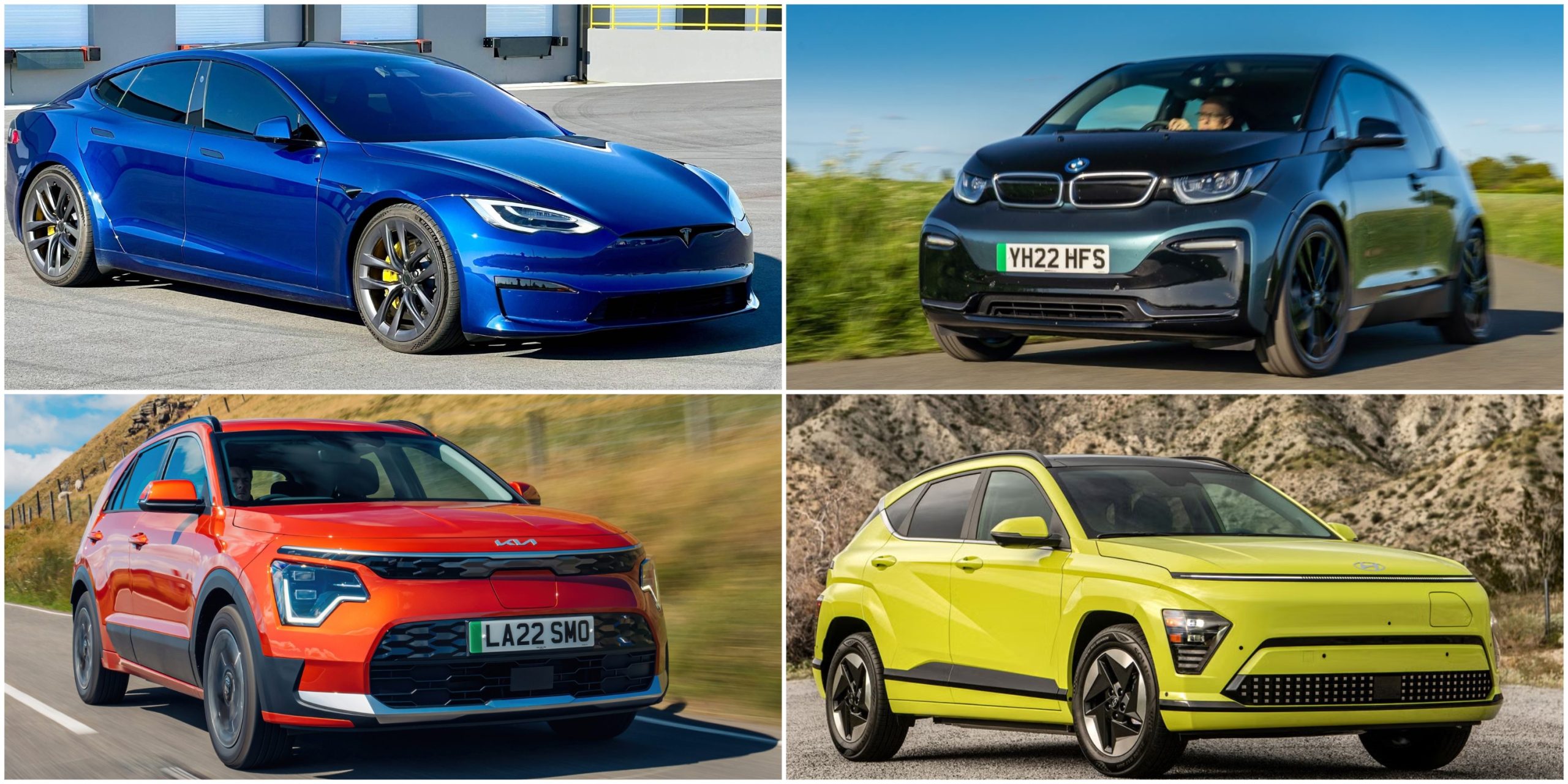There are many things to think about when you choose your next vehicle. You might consider the brand, size, price, running costs, reputation, popularity, and more. Everyone is different, and each person has their own priorities.
Some people care more about personal preferences like the design or color. Others focus on practical matters, looking at the costs from the moment they buy the car until they sell it. Either way, the amount of money you get when you sell your car is important.
The resale value of your car affects how easily you can afford your next car. Resale value is basically the reverse of depreciation, which shows how much your car loses value over time.
Usually, more expensive cars lose more of their original value faster. This is one reason why electric vehicles seem to lose more value over time than cars with internal combustion engines.
Resale value and depreciation are affected by many things, but they both show how appealing your car is to other people. Depreciation is also shaped by factors such as mileage, age, how well it runs and looks, service records, and more.
It’s fair to say that cars people want more will keep their value better than those that people stay away from due to known issues or other concerns.
Also Read: 10 Manual Cars Known for Their Durable Clutches
Do electric vehicles have good resale value?
Electric vehicles kept their value really well until 2022 because there were a lot of people who wanted them and not enough available. Tesla, being the most popular EV brand, went against what usually happens. In 2022, some owners said they sold their used Teslas for more than they originally paid. But starting in 2023, things changed when Tesla suddenly lowered its prices.
The price of a new car affects how much a used one can be sold for, since no one wants to pay more for a used car than a new one, even if the used one cost a lot more originally. For example, the Tesla Model X cost around $121,000 in the second half of 2022, but now a new one is only $77,990.
So if someone bought one back in 2022, those price cuts would cause it to lose value fast. That same Model X would have dropped more than 55% in value in under two years.
It’s not just the lower new car prices that affect how much your car is worth — the deals and savings offered for new EVs matter too. In the example of the Model X, there’s a $7,500 federal tax credit available, and some states offer even more.
So it’s tough to ask $67,000 for a 2022 Model X when a buyer can get a new one for just a little more. If you want to sell it, you’d need to lower your asking price, which brings down the resale value.
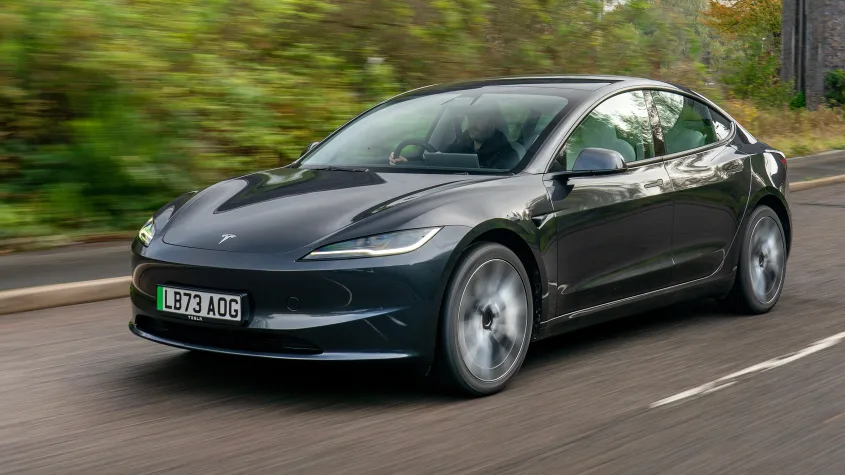
Are used EV prices falling?
When looking at the situation, people have different opinions based on how they see things. Some believe that the drop in resale value could slow down EV adoption because buyers may not want a car that loses value quickly.
Others think that lower prices for used EVs help more people afford them, which could speed up EV adoption. Most people who have driven an EV don’t want to go back to gas cars, so many who buy a used EV might later upgrade to a new one.
But for this to happen, the used EV market needs to work well, which means there should be enough EVs available, among other things. Until recently, this wasn’t the case. One reason is that people who paid a high price for their EVs haven’t been willing to sell.
Another reason is that EVs have been very reliable, and Tesla has updated them with new features through software, so owners didn’t feel the need to get a new one. Other car companies haven’t been eager to sell EVs, so the number of used EVs has stayed low.
Now things are starting to shift, with about 10% of cars sold in the U.S. being battery-powered. Another reason more used EVs are available is that companies are replacing their older electric vehicles.
For example, Hertz has sold tens of thousands of Teslas since the start of the year and is still selling more. These EVs are usually in good condition and priced well. Based on what’s available and current prices, it may be the best time to buy a used electric vehicle.
A recent study found that electric vehicles lose value faster than any other major type of vehicle. On average, they lose over 49% of their value after five years. In comparison, the average for all vehicles is less than 39% over the same time. Experts say this pattern may continue until EVs no longer need special deals to sell and people trust that they are affordable to own for a long time.
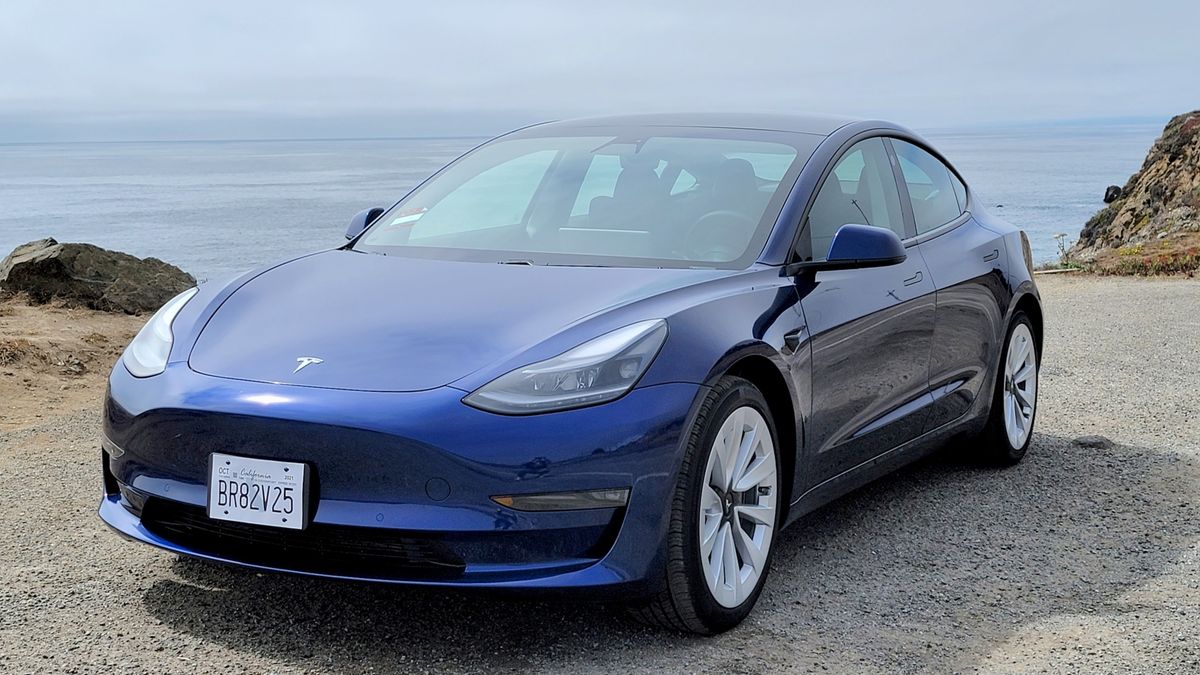
Tesla Model 3
Although the five-year resale value of the Tesla Model 3 has gone down compared to last year, it still holds the number one spot. The Tesla Model 3 is one of the most popular used electric cars because it has great features, good prices, and a fair number of cars available in the used market.
Tesla recently released the updated Model 3 with better features and improved quality. This will probably affect the prices of used Model 3s, as more people may want to switch to the newer version. I still think the used Model 3 will stay popular, since it’s the most affordable model from a brand that leads the EV market.
Buyers of a used Model 3 can still enjoy the latest software updates and the new features Tesla has added over time. The fact that the battery still has three years of warranty left helps people feel more confident when buying.
Research shows Tesla batteries are made to last 10 to 15 years with only a small amount of wear, and there haven’t been any major issues with the Model 3. Even though the 2019 Model 3 was a solid car, Tesla made some upgrades in November 2020, so it could be better to look for a newer version.
Tesla took out the ultrasonic sensors from the Model 3 in 2022, but recent software updates have greatly improved how the car works using just cameras. Since these updates don’t yet work on cars with ultrasonic sensors, it’s important to choose the model year wisely.
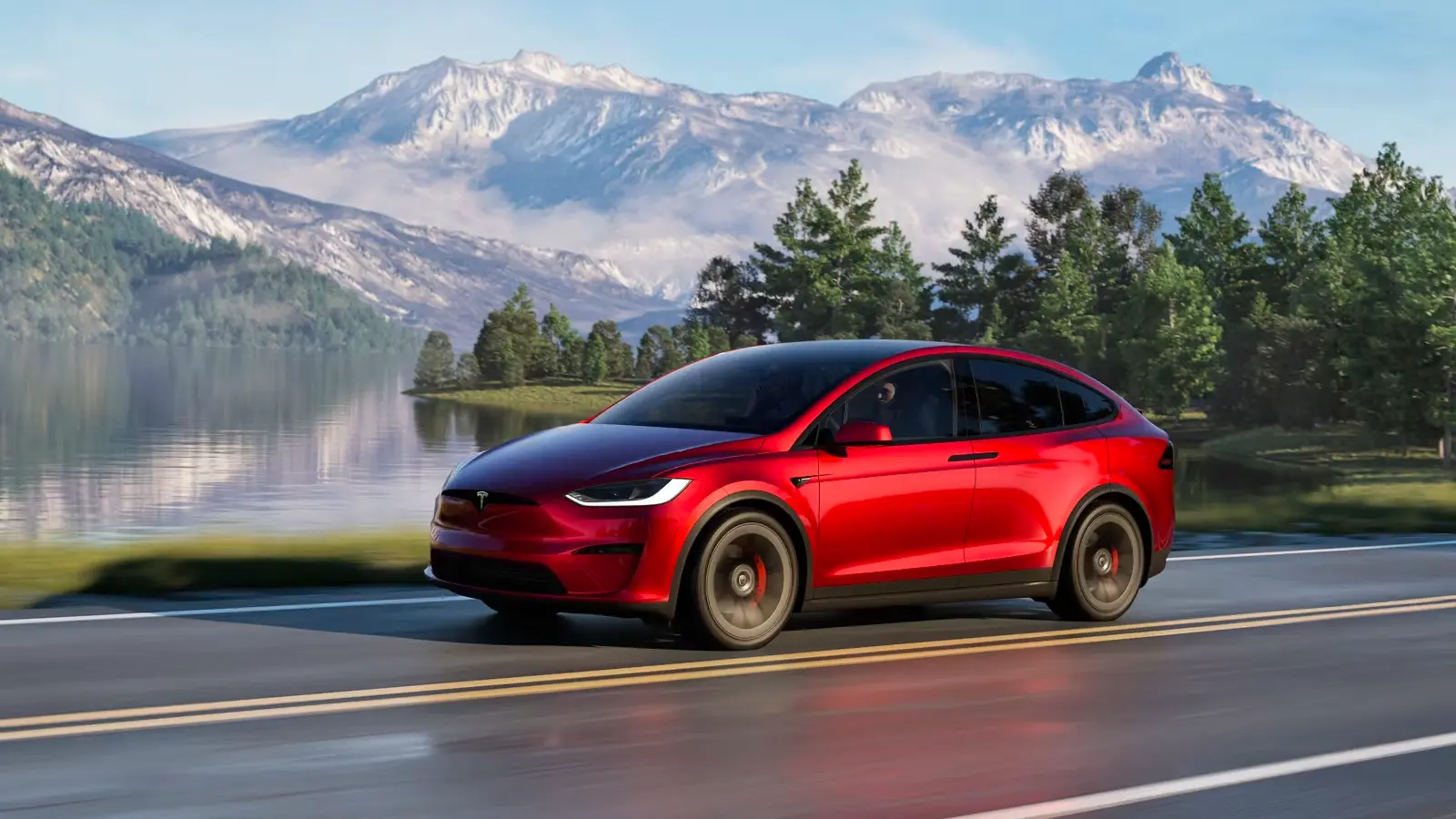
Tesla Model X
The Model X in the example above showed the worst-case scenario, where someone bought the car when prices were at their highest and tried to sell it after large price cuts the following year. But not every car on the market is in this situation, which is why the Tesla Model X is still considered one of the cars with the best resale value after five years.
The five-year resale value went down from 50.1% in 2023 to 44.8% in 2024, and current prices help explain why. For the first time, a version of the Tesla Model X qualifies for the federal EV tax credit, which makes buying a new one more appealing.
Tesla updated the Model X at the same time as the Model S in 2021, so it’s not hard to find a used one that has the newest features. The update made small changes to the outside but brought major upgrades to the performance and inside features. It also introduced the popular Plaid version, which is one of the fastest Teslas available.
The updated Model X includes the Hardware 4 Autopilot system and sensor package, which Tesla only recently started using in all of its models. The new interior design features the unique yoke steering and adds better entertainment and comfort options.
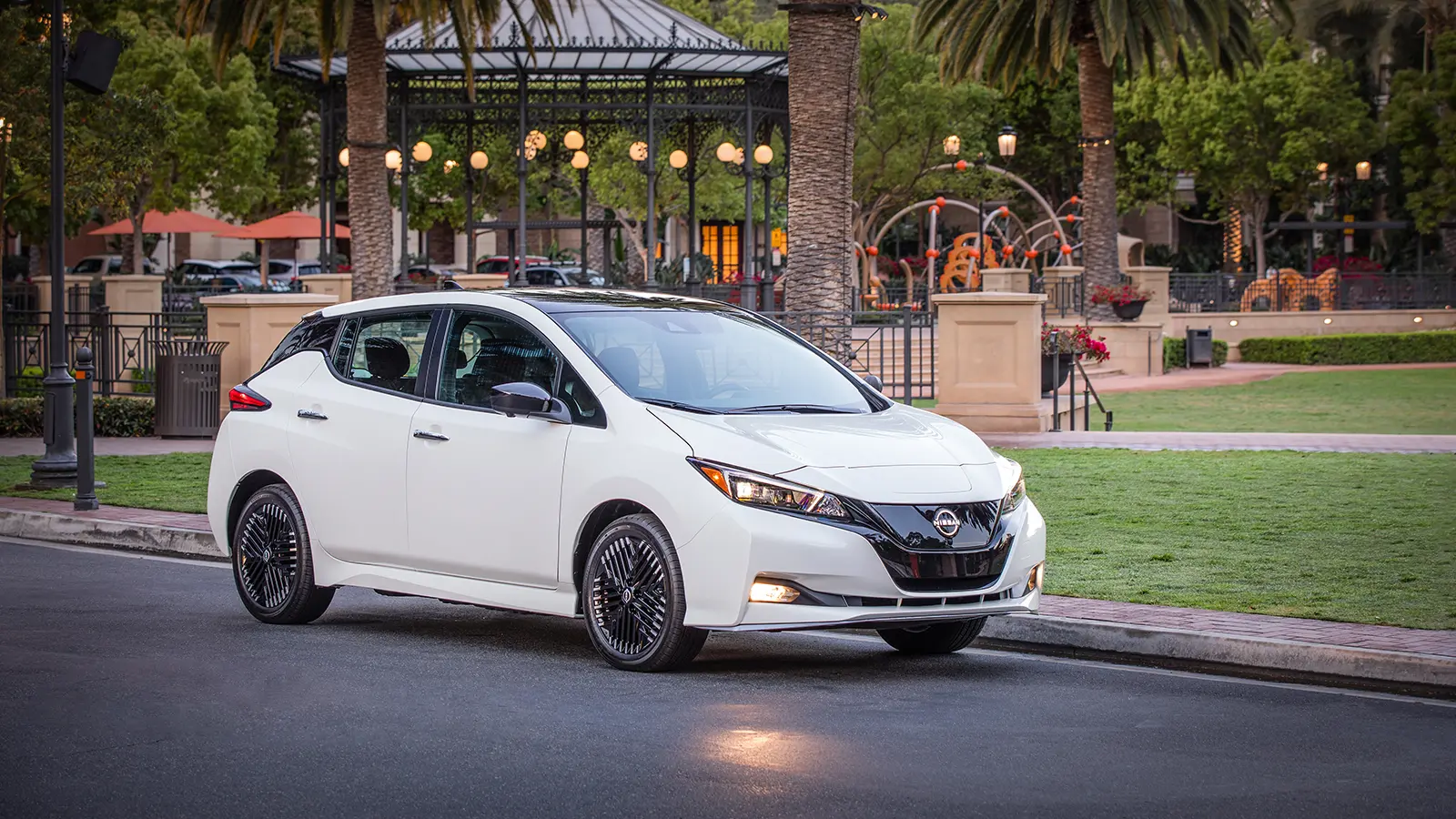
Nissan Leaf
Nissan kicked off the electric car movement with the Leaf in 2011 but lost momentum, influenced by the cautious approach of other Japanese carmakers. Tesla released the Model S in 2012 and kept improving rapidly, leaving Nissan far behind.
The second version of the Leaf came out in 2017, but it was too late to catch up. Now, seven years later, its only real selling point is the price, and Nissan is thinking about ending the model without replacing it.
The Nissan Leaf helped spread the belief that EV batteries don’t last and cost a lot to replace, but that was only true for the first generation. That version didn’t have a good cooling system for the battery, which led to many early failures.
But Nissan fixed the issue, and the batteries became much more reliable. The second-generation Leaf doesn’t have any major problems besides its short driving range.
The Nissan Leaf starts at $28,140 for the 40-kWh version or $36,190 for the 60-kWh model, and it qualifies for a $3,750 tax credit. However, the range is very low—the 40-kWh version can only go 149 miles, while the bigger battery allows for 212 miles per charge.
You can find used five-year-old Nissan Leaf EVs starting at $15,000, with an average price around $17,687. This makes the Leaf a good choice if you’re on a small budget. Since the model got an update in 2022 and is being phased out, prices are likely to fall even more by the end of the year.

Hyundai Ioniq Electric
With a few new upgrades, the Hyundai Ioniq Electric is mainly a continuation model. Recent improvements include automatic high beams, emergency brakes, and a driver-focused monitor. The voice recognition system of the Ioniq has also been improved.
One of the best features of the Hyundai Ioniq Electric is its ability to control the battery charge remotely using a smartphone app. The car is well-regarded for its charging ability, as it can charge a phone quickly. In three years, this popular EV also lost around 48% of its value in resale.
For Canadian EV buyers, the battery warranty lasts for five years. The Hyundai Ioniq Electric’s battery can be charged to more than 85% in under 55 minutes and has a range of up to 190 miles.
A helpful addition to the Ioniq Electric’s resale value is its 8-year battery warranty. Other improvements in the EV will continue to be popular with used electric vehicle buyers.

Chevrolet Bolt EV
Once seen as a serious rival to Tesla, the Chevrolet Bolt EV has had a complicated journey, mostly due to faulty batteries provided by LG. GM tried not to recall the cars, but after several battery fires were reported in 2021, they had no choice. Just when it seemed like the Bolt name couldn’t be saved, it unexpectedly became GM’s best-selling electric car.
Part of the Bolt’s late popularity came from big price cuts, which made it the cheapest electric car in the U.S. after August 2022. At that time, Chevrolet lowered the price from $31,500 to $25,600 to make the struggling EV more appealing.
They raised it a little in January 2023 to $26,595, but it still stayed the most affordable EV. The recall due to battery fires had one benefit—you can now find used 2017–2022 Chevy Bolts with brand-new batteries.
Because of this, many people want the Bolt, and it’s becoming harder to find. In June 2023, Chevrolet stopped replacing the batteries in 2020–2022 Bolt EVs and started using a diagnostic system to check if the battery actually needs replacing.
If you’re looking to buy a Chevrolet Bolt, make sure to get proof that the battery was replaced. Keep in mind that while the Bolt has a good range of 259 miles, its fast charging is limited to 50 kW.
This means it charges slowly—you’ll only get about 100 miles (161 kilometers) of range after thirty minutes of charging.
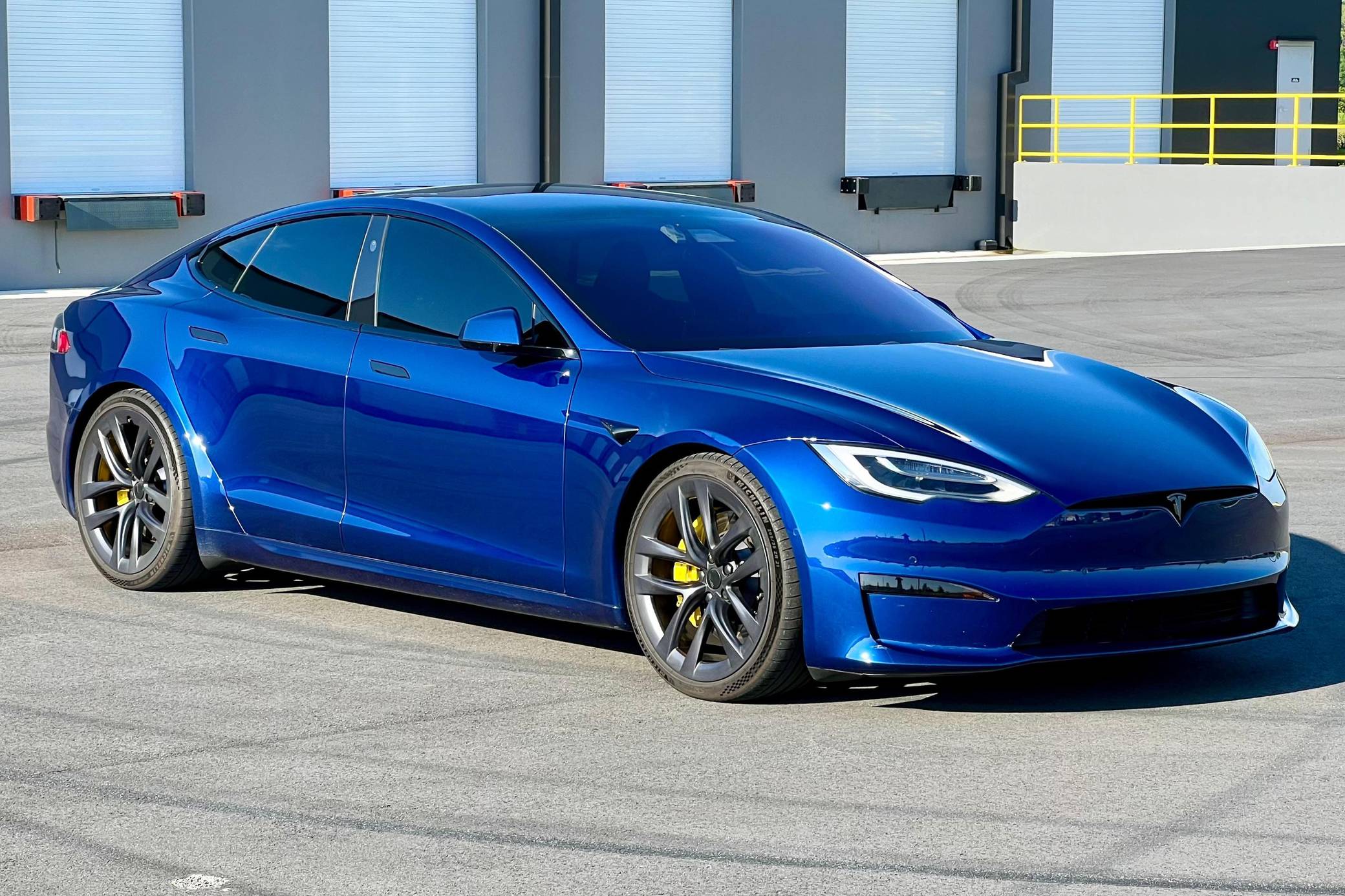
Tesla Model S
The Model S was Tesla’s first high-volume electric car and stayed the best-selling one until the Model 3 took that spot in 2018. Tesla did many things right with the Model S, showing people that electric cars could really compete with gas-powered ones.
This was a big move, especially in the luxury car market. Its success helped Tesla become well known and played a big role in getting more people interested in EVs.
But the Model S didn’t have a perfect track record. There were a lot of battery failures in the 2012–2015 models. The problem got worse because many of these batteries failed after the warranty ended. If you’re looking to buy a Tesla Model S at a lower price, it’s best to avoid those years, as they can still have serious issues.
In late 2015, Tesla changed the battery design, and there haven’t been major problems since then. In 2021, Tesla gave the Model S a big update, including the Model S Plaid, which is still the fastest and most powerful Tesla.
The updated Model S has advanced technology, but its sales haven’t matched that level. One reason might be the price, which Tesla cut in the second half of 2023 to $74,990.
Then on April 19, Tesla dropped the price by another $2,000. This is helpful for people wanting to buy a new one, but it’s not good news for those trying to sell theirs.
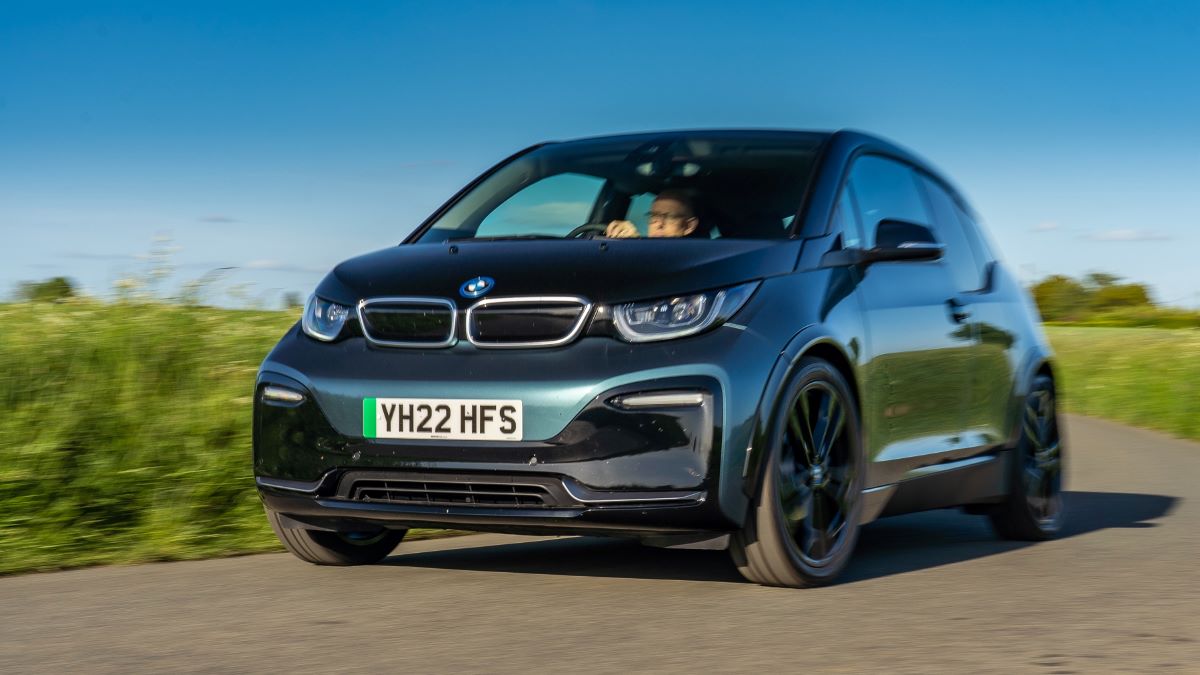
BMW i3
Experts say the BMW i3 is one of the electric cars that keeps its value well when resold, especially when looking at range. The i3 has some great features like mobile Wi-Fi and Driving Assistant.
It also comes with a lot of good-value extras, such as a unique interior with raw eucalyptus-wood touches. The i3 has soft leather seats that give it a stylish and sharp look. This electric car helps strengthen BMW’s name for smart engineering as well as solid driving performance.
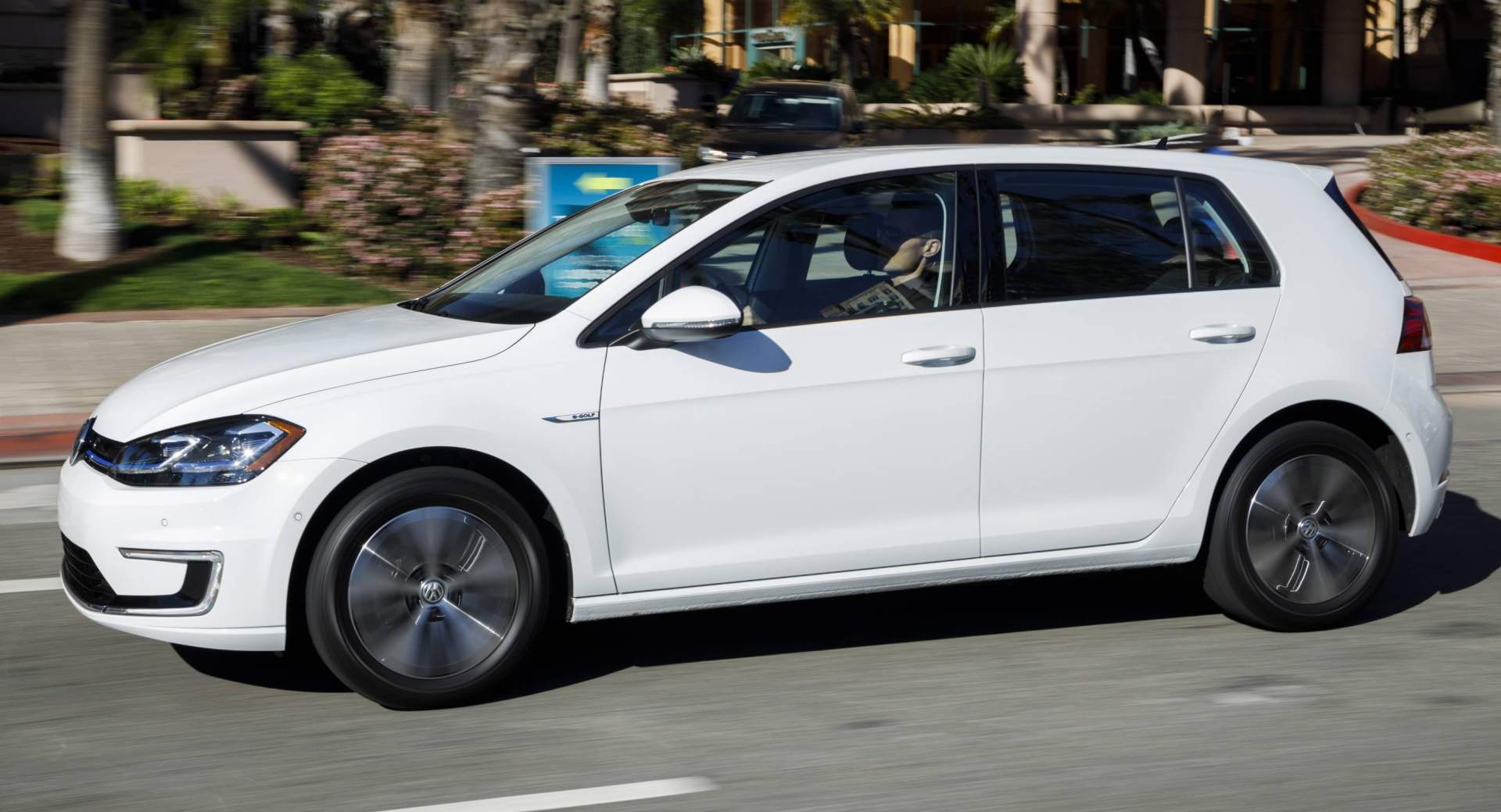
Volkswagen e-Golf
The Volkswagen e-Golf can go 200 km on one charge, according to the EPA. If you’re checking out used electric cars that keep their value, this one is a very budget-friendly option. It comes with standard features like heated front seats, Apple CarPlay, and Android Auto.
The e-Golf does better than other options such as the Kia Soul EV, Hyundai Ioniq Electric, and Honda Clarity Electric. The e-Golf handles corners very well because it uses the XDS Cross Differential System taken from the sporty GTI hatchback.
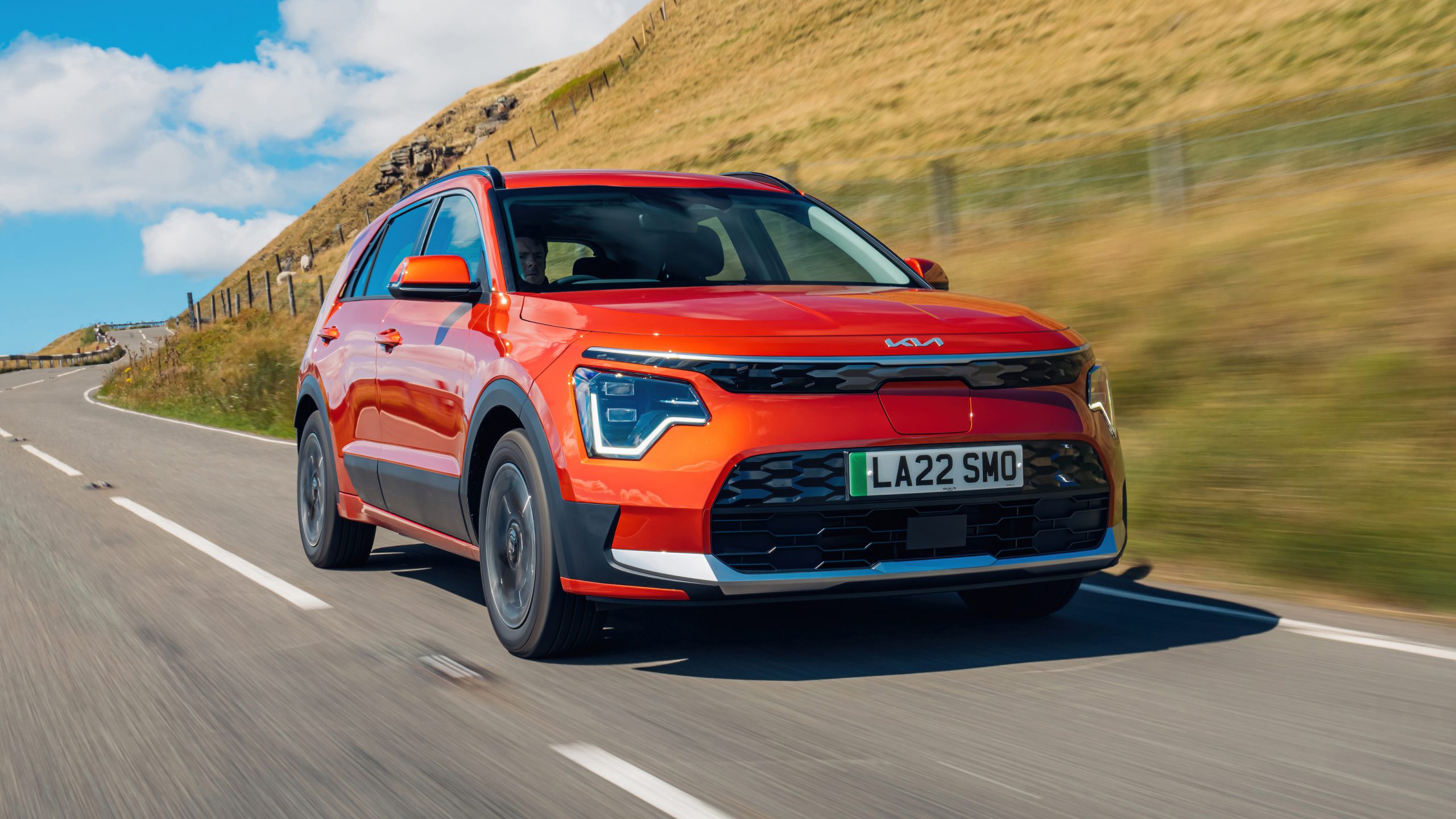
Kia Niro EV
Kia has gotten even better when it comes to being reliable, and it’s received top marks from sources around the globe. That’s one reason why the Kia Niro EV is on the list of electric cars that keep their resale value.
Kia also gives buyers the features and driving range they want in a used electric car. The Niro EV comes with high-end features like LED lights and a Harman Kardon sound system, and it can drive up to 385 km on one full charge.
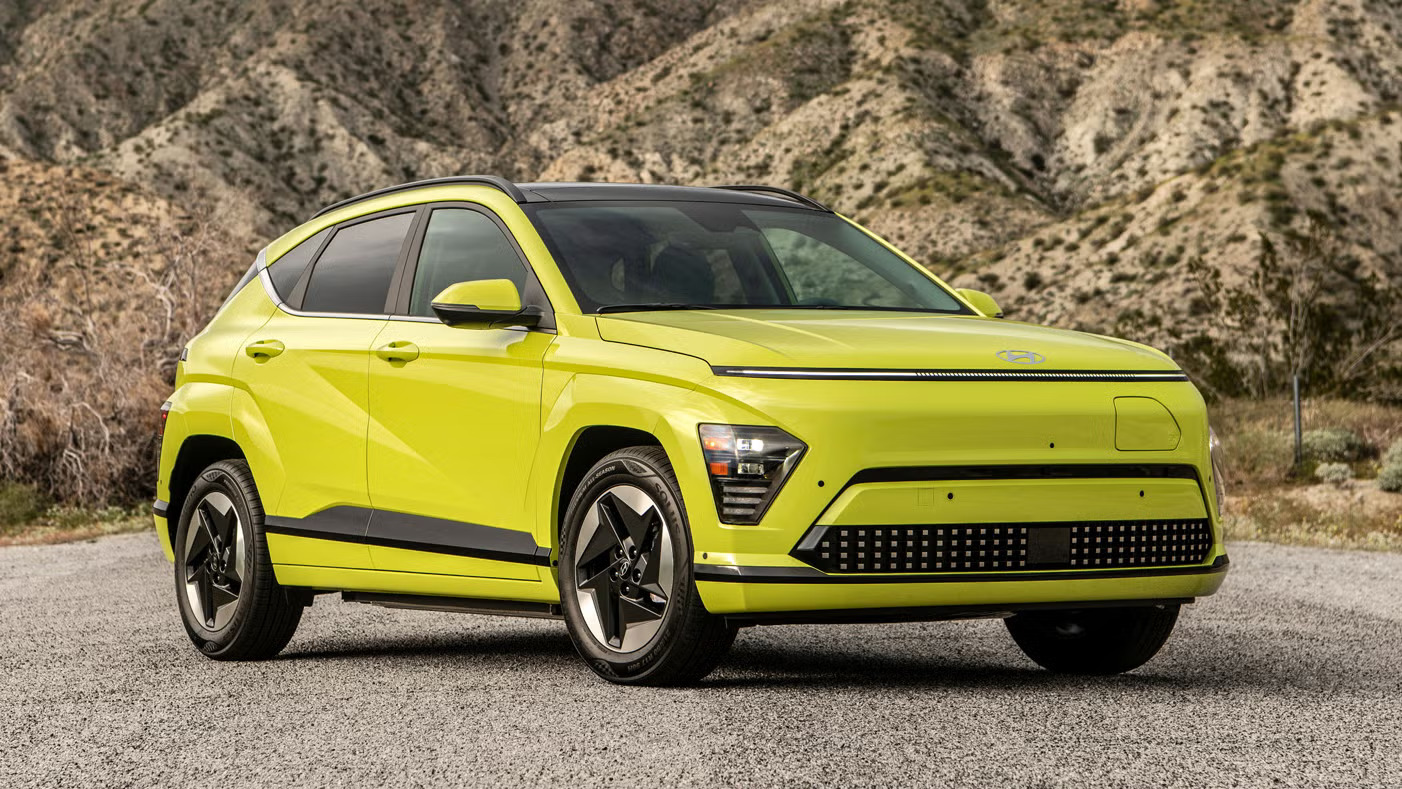
Hyundai Kona Electric
The Hyundai Kona is among the most popular electric cars sold in Canada. The electric version of the Kona can go 415 kilometres on a full charge. Hyundai also makes gas versions of the Kona that share many of the same good points.
Also Read: Top 10 Cars With the Best Cooling Systems for Long-Lasting Engines
Besides the price, Hyundai makes a strong case for the Kona’s resale value with its lifetime battery warranty. The Kona Electric also doesn’t lack useful features, as it comes with many built-in tech options that used-car buyers still find attractive.
These include automatic forward emergency braking, lane-keeping help, and pedestrian detection, which are all leading features.

